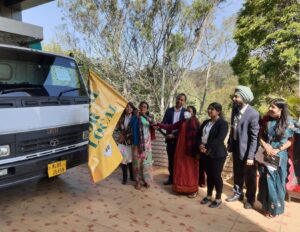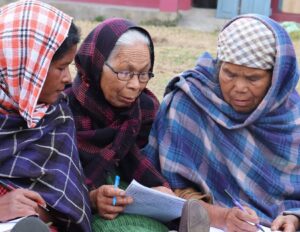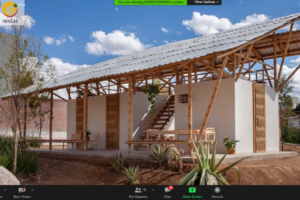A follow up visit to Khweng, Ri-Bhoi was conducted on the 27th of August 2021 regarding the Cocoon dyeing training, which is part of the previous training programme in December . This training programme was conducted to essentially try out a new approach to dye the Eri silk which would eventually result in faster production of the same. The conventional and more time-taking method was yarn-dyeing, so the training programme aimed at trying out a method of dyeing the cocoon itself. This 2-day training programme was attended by 6 trainees from Madanrtiang; the resource persons for this programme were Kong Rikynti Syiem and Bah Lastnokhel Jalong who are both traditional professional Eri weavers from Khweng and run their own eri farms and training centre in the community.
The adjacent images show how the process takes place, which is further elaborated below.
On the first day, the trainees were taught to wash the cocoon with dish soap and boil them for 1 to 1 and a half hours. On the second day, the washed cocoons are beaten manually with fingertips to form flat cocoon cakes which are transferred to a kind of spindle. After this preparation, the dyeing process begins; the leaves of the mordant which is used to retain the dye, called ‘Sla Sohku’ are cut into pieces and kept aside, after which the lac (or the dye) is ground to form a powder; simultaneously, a pot of water is heated to a boil. The lac powder is passed through a sieve, following which, cold and hot water are poured through the sieve one after the other. The maroon dye is passed through the sieve again after which it is transferred to a pot and boiled. Once the mixture has reached the boiling point, the “Sla Sohku” leaves are added followed by the cocoon cakes. This dye bath is cooked for 1 to 2 hours. After this process, the cocoon cakes are removed from the bath, rinsed with cold water and dried. This makes them ready to be hand spun.
The Training proved to be successful and NESFAS looks forward to seeing the production of the indigenous Eri silk flourish in the months to come. Eri weaving is culturally significant to the Indigenous Peoples; besides being a chief source of revenue for a lot of the local farmers here in the Ri-Bhoi area. NESFAS promotes it as an art form that can be learnt and cultivated to replenish the drought that the local culture has been facing for the past couple of years. Traditional handloom practices aren’t merely things of the past; with proper exposure and interest, a thriving industry can and should bloom out of this practice.













